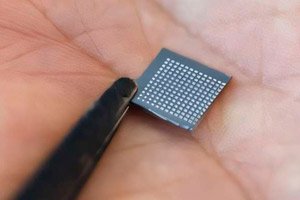
All iLive content is medically reviewed or fact checked to ensure as much factual accuracy as possible.
We have strict sourcing guidelines and only link to reputable media sites, academic research institutions and, whenever possible, medically peer reviewed studies. Note that the numbers in parentheses ([1], [2], etc.) are clickable links to these studies.
If you feel that any of our content is inaccurate, out-of-date, or otherwise questionable, please select it and press Ctrl + Enter.
Home Melanoma Test: Microneedle Patch to Replace Biopsy
Last reviewed: 27.07.2025
 ">
">Melanoma testing could one day be done at home using a skin patch and a two-line test strip — similar to at-home COVID-19 tests, according to researchers at the University of Michigan.
A new silicone patch with microscopic star-shaped needles, called ExoPatch, has been able to distinguish melanoma from healthy skin in mice.
The patch and test represent a step toward rapid, at-home melanoma testing, helping patients detect the most aggressive form of skin cancer early — without a biopsy or blood draw.
"Star-shaped needles make the puncture easier and less painful, but they are so small that they only penetrate the topmost layer of skin — the epidermis — and do not puncture blood vessels,"
said Sunita Nagrath, a professor of chemical engineering at the University of Michigan and co-author of the study published in the journal Biosensors and Bioelectronics.
ExoPatch microneedles, just 0.6 mm long and with a tip width of less than 100 nanometers (0.0001 mm), are coated with a gel that captures exosomes—tiny bubbles secreted by cells—from the interstitial fluid that fills the spaces between cells in the epidermis.
Previously, exosomes were thought to be simply “garbage” thrown out by cells for disposal. In fact, they contain fragments of DNA and RNA that are used by cells to exchange signals. Cancer cell exosomes may help tumors spread by preparing tissues to accept tumor cells before they arrive. Detecting these exosomes may allow cancer to be detected earlier than existing methods.
The gel covering the ExoPatch contains a protein called annexin V, which attracts exosomes and attaches them to the surface of the microneedles. After removing the patch from the skin, it is placed in acid, which dissolves the gel and releases the exosomes into the solution. A test strip is then dipped into the solution:
If the sample contains melanoma exosomes, two bands will appear,
If not, there is one strip,
just like what happens with COVID-19 tests.
"A person with fair skin and moles needs to visit a doctor every six months to get a biopsy done to see if they are cancerous or not.
With this test, you can do it at home, get the results right away, and if they are positive, you can see a dermatologist,"
says Nagrath.
As a first step in proving the concept, the researchers tested ExoPatch on a sample of pig tissue, which is similar in thickness and composition to human skin. Using a microscope, they found that the microneedles penetrated about 350 to 600 nanometers into the skin. For comparison, the epidermis on a human forearm is about 18,300 nanometers thick.
To test whether ExoPatch could capture melanoma exosomes from the skin, the team tested mouse skin samples: half from healthy animals, half from mice injected with a portion of a human melanoma tumor. After 15 minutes of application, ExoPatch was placed under a high-powered microscope.
“When I saw the microscopic images, I was pleased to see how well the exosomes adhered to the microneedles and were in the 30-150 nanometer size range, as we expected,”
said Scott Smith, a chemical engineering graduate student at the University of Michigan and co-author of the study.
After confirming that the exosomes were sticking to the ExoPatch, the researchers dissolved the gel and ran the samples through the test strips. The test successfully distinguished melanoma samples from healthy tissue — the intensity of the second strip was 3.5 times higher in melanoma samples.
ExoPatch recovered 11.5 times more exosomal proteins from melanoma samples compared to healthy tissue, demonstrating its ability to selectively capture cancer exosomes.
The next step will be a pilot study in humans, followed by clinical trials to put the technology into practice. In addition to melanoma, the ExoPatch gel coating can be modified to detect exosomes secreted by other cancers associated with solid tumors, such as lung, breast, colon, prostate, and brain cancer.
"This is the first patch designed to capture disease-specific exosomes from the fluid under the skin.
The potential of this approach is enormous,"
Nagrath said.
